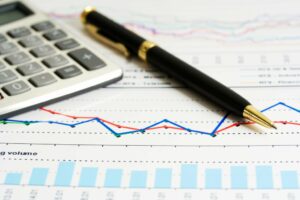
This value is normally set very low, as shares cannot be sold below the par value. Any money the company collects above the par value is considered additional paid-in capital and is recorded as such on the balance sheet. The Company presents “Adjusted EBITDA” as a supplemental measure of its performance. The Company calculates and presents Adjusted EBITDA because management believes it is of importance to investors and lenders in relation to its overall capital structure and its ability to borrow additional funds.

This accumulation of profits can be utilized to fund future growth initiatives, such as research and development, expansion, debt repayment, or building cash reserves. The decision to pay dividends and the amount to be paid depend on various factors, including the company’s profitability, cash flow, capital requirements, and growth prospects. The ultimate effect of cash dividends on the company’s balance sheet is a reduction in cash for $250,000 on the asset side, and a reduction in retained earnings for $250,000 on the equity side. By the time a company’s financial statements have been released, the dividend is already paid, and the decrease in retained earnings and cash are already recorded.
How Does Common Stock Affect Retained Earnings?
Dividends are often paid in cash, but they can also be issued in the form of additional shares of stock. In either case, the amount each investor receives is dependent on their current ownership stakes. Stock dividends may signal financial instability or at least limited cash reserves. For the investor, stock dividends offer no immediate payoff but may increase in value over time. If Company X declares a 30% stock dividend instead of 10%, the value assigned to the dividend would be the par value of $1 per share, as it is considered a large stock dividend.
- For instance, a company may declare a $1 cash dividend on all its 100,000 outstanding shares.
- S&P 500 companies that have a long history of paying increased dividends are called Dividend Aristocrats.
- At the same time, the Board announced a $10 billion, three-year share buyback, to start in October 2012.
- Revenue, sometimes referred to as gross sales, affects retained earnings since any increases in revenue through sales and investments boost profits or net income.
- When you look at a stock listing online, check the “dividend yield” line to determine what the company is paying out.
- Conversely, when a company retains earnings and does not distribute dividends, it increases its retained earnings, providing a greater pool of capital for future initiatives.
When a company develops a reputation as consistently rewarding investors, it naturally draws interest among those who aren’t yet investing in it. A business that consistently issues dividends is seen as one that is financially healthy, which boosts confidence. Plus, knowing that additional payout is coming on a somewhat regular basis will encourage investors to continue to put money into a company. Before you can see for yourself what the effect of a stock dividend is to your bottom line, you’ll need to determine your total earnings balance.
What Is an Example of a Stock Dividend?
Suppose a dividend-paying company is not earning enough; it may look to decrease or eliminate dividends because of the fall in sales and revenues. For example, if Company HIJ experiences a fall in profits due to a recession the next year, it may look to cut a portion of its dividends to reduce costs. Therefore, a stable dividend payout ratio is commonly preferred over an unusually big one. A good way to determine if a company’s payout ratio is a reasonable one is to compare the ratio to that of similar companies in the same industry. Conversely, a drop in share price shows a higher dividend yield but may indicate the company is experiencing problems and lead to a lower total investment return. On the ex-date, investors may drive down the stock price by the amount of the dividend to account for the fact that new investors are not eligible to receive dividends and are therefore unwilling to pay a premium.
- Thus, if someone wants to purchase shares of a company in order to receive an upcoming dividend, he or she must buy those shares at least three days before the record date.
- The hope of receiving dividends drives investors to purchase stock in a corporation.
- If a company consistently pays out a significant portion of its profits in dividends, it may have limited retained earnings that can be used for reinvestment.
- The cash dividend declared is USD 1.25 per share to stockholders of
record on 2010 July 1, (date of record), payable on 2010 July 10, (date of payment). - When a company issues a dividend to its shareholders, the value of that dividend is deducted from its retained earnings.
- If a share is issued with a par value of $1 but sells for $30, the additional paid-in capital for that share is $29.
Distributions are announced in advance and determined by the company’s board of directors. Just as consistently issuing dividends helps boost confidence in anyone looking at your history, that same historical data can drop confidence. You may need to cut back for a year or two as you work on expansion, for instance, but future investors won’t necessarily have that context. They’ll simply see a big reduction in your payouts as a sign you went through tough times. Some investors learn a stock’s calendar and deliberately choose that time of year to invest. They know a dividend will be coming during that timeframe, so they save up and invest at that point.
AMD Reports Fourth Quarter and Full Year 2023 Financial Results
Thus, the net effect of a stock dividend is a reduction in retained earnings and an increase in common stock. Typically dividend aristocrats that don’t see much value in reinvesting most of their profits because they have saturated their market. A term Peter Lynch uses in his books to describe company’s terrible attempts at diversification. This is because they need cash for research and development, expansion, and other business growth activities. More often than not, a portion of the profits are reinvested back into the business to fund operations. Both revenue and retained earnings are important in evaluating a company’s financial health, but they highlight different aspects of the financial picture.

The dividend payout ratio is considered more useful for evaluating a company’s financial condition and the prospects for maintaining or improving its dividend payouts in the future. The dividend payout ratio reveals the percentage of net income a company is paying out in the form of dividends. Dividends, whether in cash or in stock, are the shareholders’ cut of the company’s profit. A company may issue a stock dividend rather than cash if it doesn’t want to deplete its cash reserves. The Company also presents free cash flow as a supplemental Non-GAAP measure of its performance. Free cash flow is determined by adjusting GAAP net cash provided by operating activities for capital expenditures, and free cash flow margin % is free cash flow expressed as a percentage of the Company’s net revenue.
Unit 14: Stockholders’ Equity, Earnings and Dividends
During a stock split, a business will issue additional shares to stockholders, who may then wonder what the tax implications are. If those new shares begin to earn income, you won’t owe taxes on it as long as you leave it in the account. However, when you sell do stock dividends decrease retained earnings the stock later, you’ll pay taxes on the amount you receive minus your basis in the stock. Although the declaration and issuance of a stock dividend does not affect the total amount of a corporation’s assets or liabilities, it can impact its stock prices.

